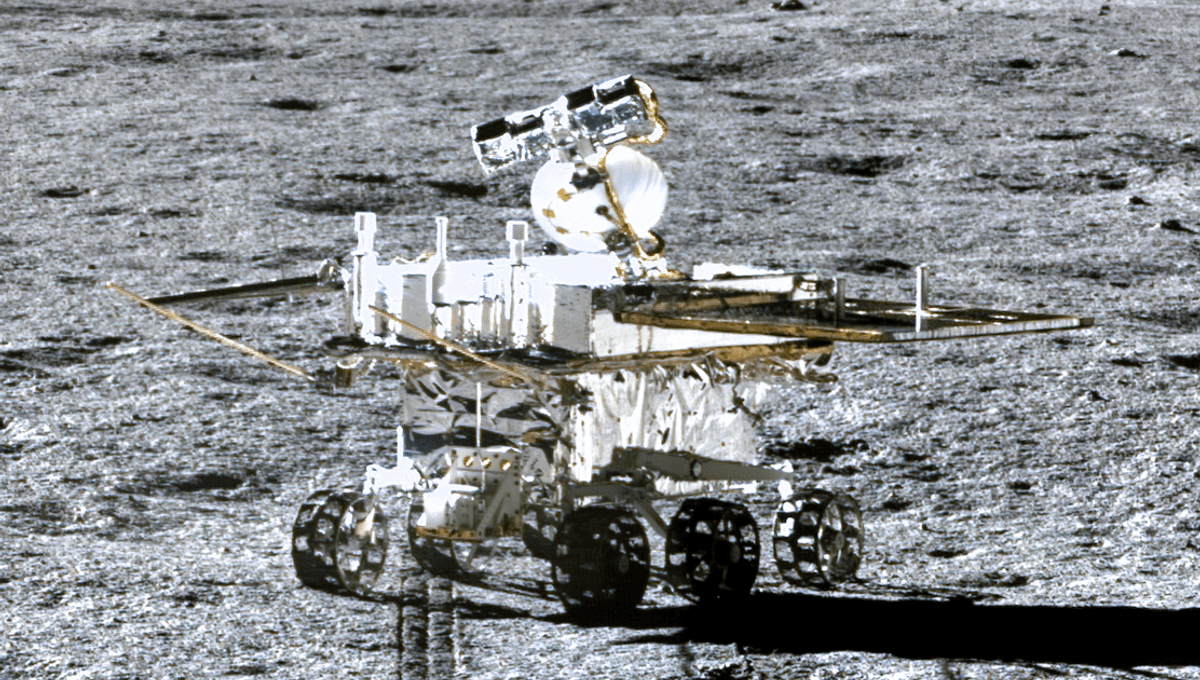
Yutu-2 has been a busy rover. Carried by the Chang’E-4 lander to the far side of the Moon in January 2019, it has moved further across the lunar surface than any other rover, collecting a variety of measurements. Now, for the first time, it has peered underneath the lunar surface down to 300 meters (1,000 feet), deeper than ever before, revealing some interesting surprises.
The Lunar Penetrating Radar (LPR) has two channels that can reach different depths depending on the frequency used. The radar sends radio waves down into the ground and collects the echoes. Different materials produce different echoes. The low-frequency one can penetrate deeper inside the Moon, while the higher frequency reveals more details of what lies just underneath the lunar surface soil, the regolith.
In 2020, the Yutu-2 team used the LPR to map the upper 40 meters (130 feet) but now it has provided a more detailed look at the top 300 meters (1,000 feet) of the lunar surface along the rover’s path. Five different layers of material have been identified below 90 meters of depth (nearly 300 feet). The thickness of each layer is quite variable, ranging from 70 meters to just 20 (230 to 66 feet). The thickest layers are quite significantly the deepest.
The team believes this tells us something about past volcanism on the Moon. Our natural satellite was once very geologically active with lava flowing on its surface. The Maria, the seas of the Moon, are large basalt plains created by volcanic activity as was the Von Kármán crater in the South Pole-Aitken Basin, where Chang’E-4 landed.
The data is consistent with a series of basalt eruptions that took place billions of years ago. The team thinks that the decrease in thickness implies that the lava effusion rate decreased after each subsequent eruption. This is consistent with the general view of volcanism on the Moon. As our satellite aged and cooled, volcanism became rarer and rarer.
The observation with the high-frequency radar mostly focused on the top 40 meters. That portion was mostly rock debris and regolith but revealed several layers too. And not just that: a buried crater was seen among the rubble. The Moon might be slow in altering its geology without an atmosphere and flowing water, but things do change.
The study was published in JGR Planets.
Source Link: Chinese Rover Reveals What Lies Beneath The Far Side Of The Moon